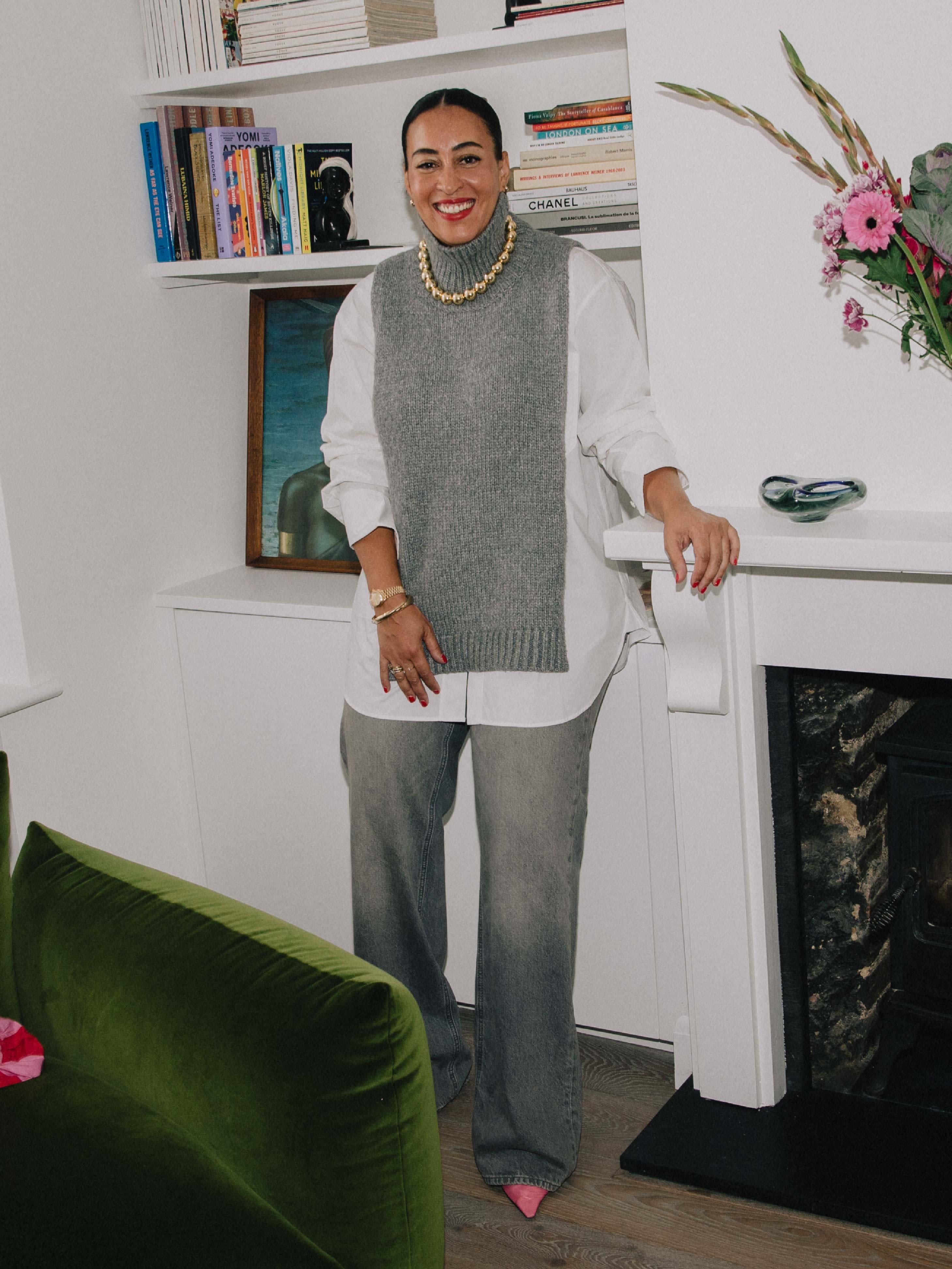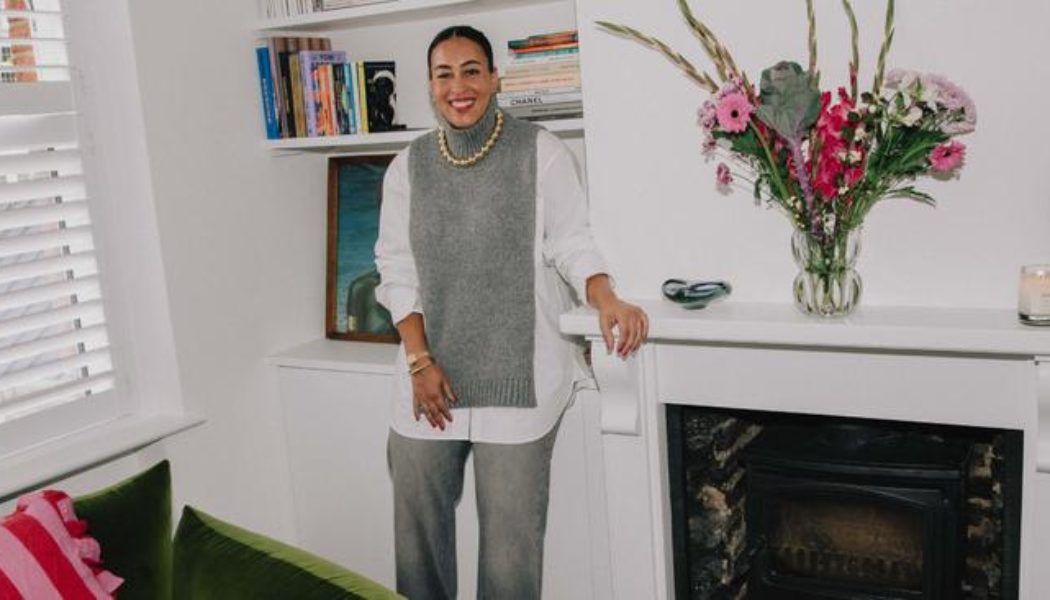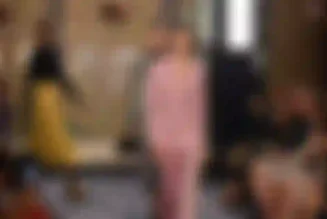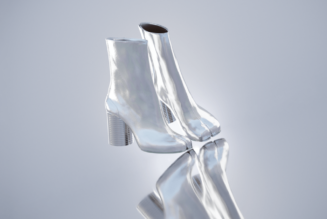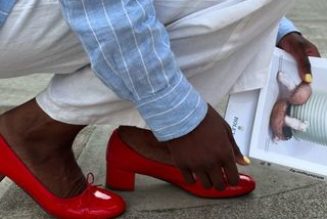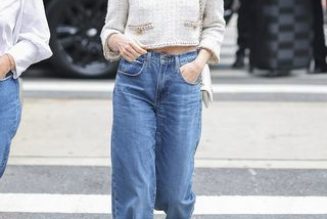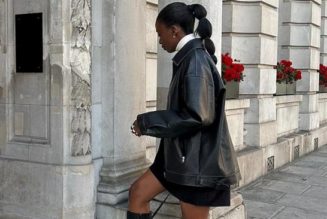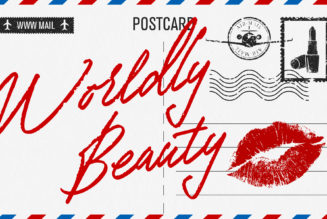
You’re a born-and-bred Londoner; what would you say is quintessential “London style” and how does it differ from anywhere else?
Years ago I think it would have been really easy to differentiate between London style and say, American. But now I feel like with social media, everything becomes a bit more blurred. London is still more daring and risky and all about the individual. But when I go to Milan, for example, they’re super polished and well-dressed, and Paris is always really cute. But there’s such a melting pot in London and so many different cultural influences that I think we can be more individual. It makes it easier to just be who you are. Having said that, I love the “quiet luxury” look—it’s like, if you know, you know. Maybe it’s because of the recession, but I’m just feeling like we don’t need to be wearing loads of logos anymore. Instead, Jakke is about being bold, and the Jakke customer would definitely wear a statement coat with her quiet-luxury outfit.
So tell us, how did your career in fashion begin and what inspired you to set up Jakke?
It’s been a long road. I began my academic journey at the London College of Fashion, although my love for fashion was ignited around the age of 8. It all started when my mother bought me a fashion wheel, and I would enthusiastically colour in designs with my crayons, constantly modifying and experimenting. Also, around that time, there was a TV program that may not be familiar to most people now, called The Clothes Show. It aired on Sunday afternoons, and one of its hosts was a Black woman called Brenda Emmanus, and I was in awe of her. I was captivated by everything she did and especially loved when she went behind the scenes at catwalk shows—I was just so obsessed.
I vividly remember telling my mum, “I’m going to be a fashion designer” and her response, which I can now admit without offence, was a somewhat sceptical “Yeah, all right, all right.” Interestingly, I’ve found that the more people doubt me, the stronger my determination becomes. I successfully gained admission to LCF to do a degree, and although I became a mother during my third year, remarkably I managed to graduate the following year whilst juggling the demands of motherhood and academics.
Following graduation, I secured a position with a company that involved cutting fabric. About six months later, an opportunity arose when one of the designers departed, and I begged the company to allow me to try my hand at designing. Once I was given the chance, it didn’t take long before they were selling my designs to H&M. My first order was for 25,000 pairs of pink satin combat trousers. Despite their initial scepticism, I had confidence in my abilities, and I continued to climb the ranks within the supply side of the fashion industry. However, as I matured, I found it disheartening working for the high street and having to rip off the designers that I admired.
It was then that I identified a gap in the market, and that’s when Jakke was born. I had noticed that there were low-quality faux-fur products on the market, juxtaposed with the high-end fur showcased on Gucci’s runways, for example. It dawned on me that there was a void in the premium sector. I drew inspiration from figures like Jane Shepherdson [former Whistles CEO], who was making waves at Whistles at the time, and I saw an opportunity to create fur coats in a similar vein. Armed with a small collection, I managed to secure interest from Urban Outfitters, and from there, Jakke took off, swiftly finding its place in the fashion world.
When you came up with the idea of Jakke, was sustainability a key factor from the beginning?
The main thing for me was my love of animals, so it was always going to be an ethical brand that didn’t use real fur, and being a vegan brand was important to me, too. As Jakke started to take off I’d get emails from people that would say, “It’s great that you really care for animals, but what about the environment?”, and so I listened and did my own research. There’s no brand that can be 100% sustainable—it’s literally impossible—but you can decide to be less harmful. That’s what we try to do with Jakke. I was sourcing materials in China recently and the supplier was getting really frustrated with me. She’d say, “I found this yarn and it’s 40% polyester”, but if it’s not recycled polyester, then no, I can’t have it. We know that even recycled polyester is going to go to landfill at some point and take 200 years to biodegrade, but it’s better to have circular polyester that’s already been used than have fresh polyester being made. We’re now trying to develop fabrics made from biomaterials like bamboo—I’ve found a faux leather fabric that has a bamboo backing which is better than plastic polyester. We’re always trying to do better, without using it as a marketing tool.
